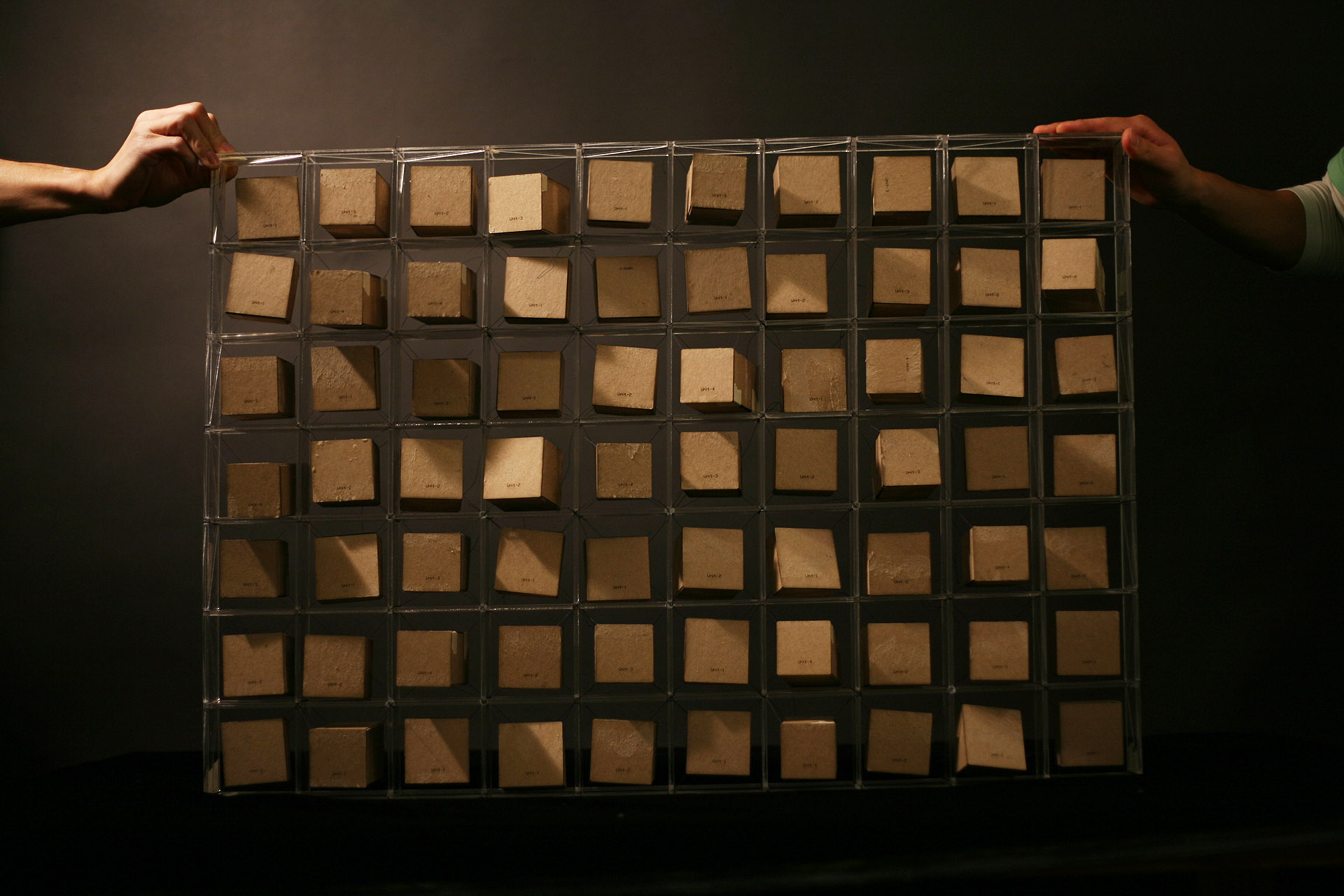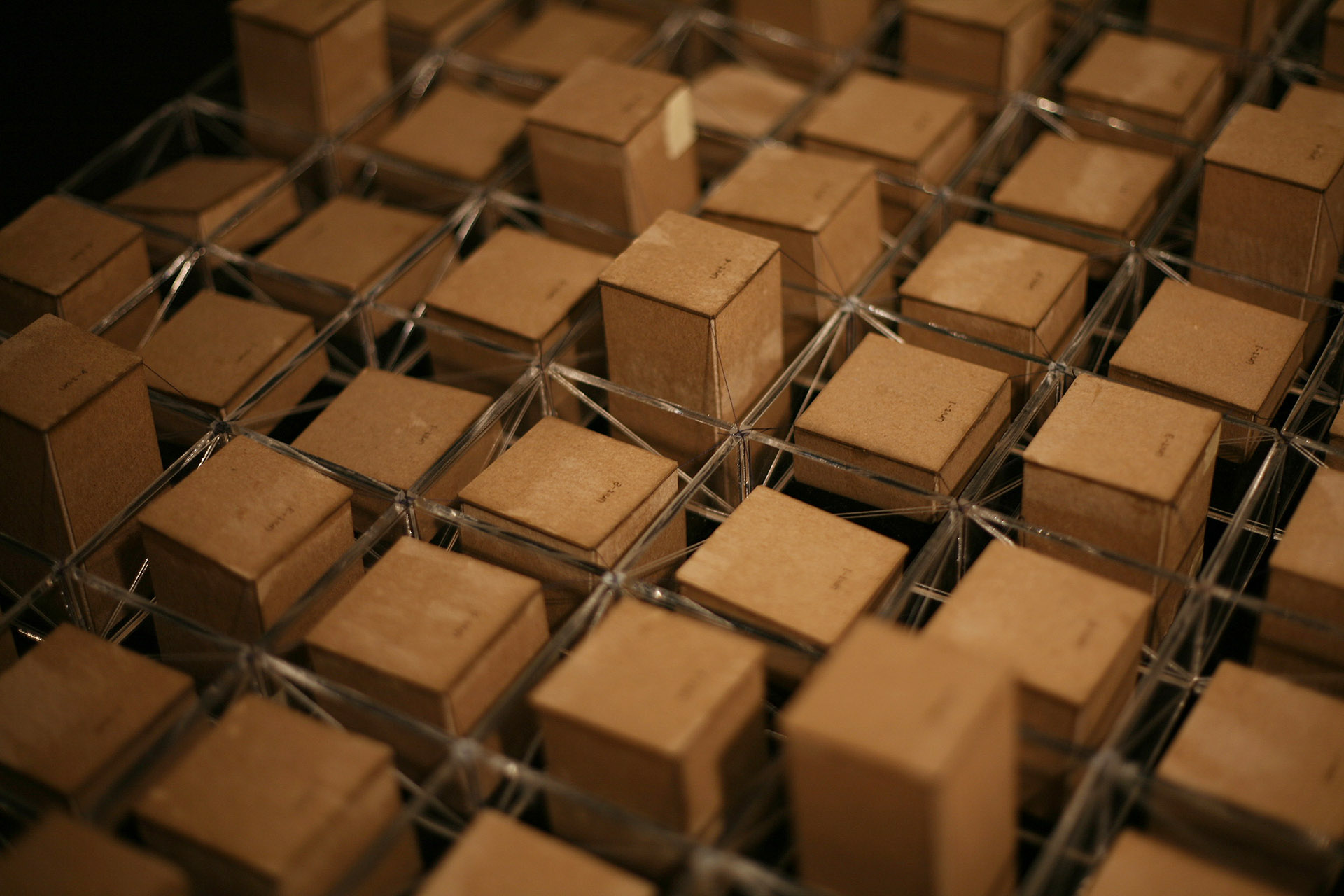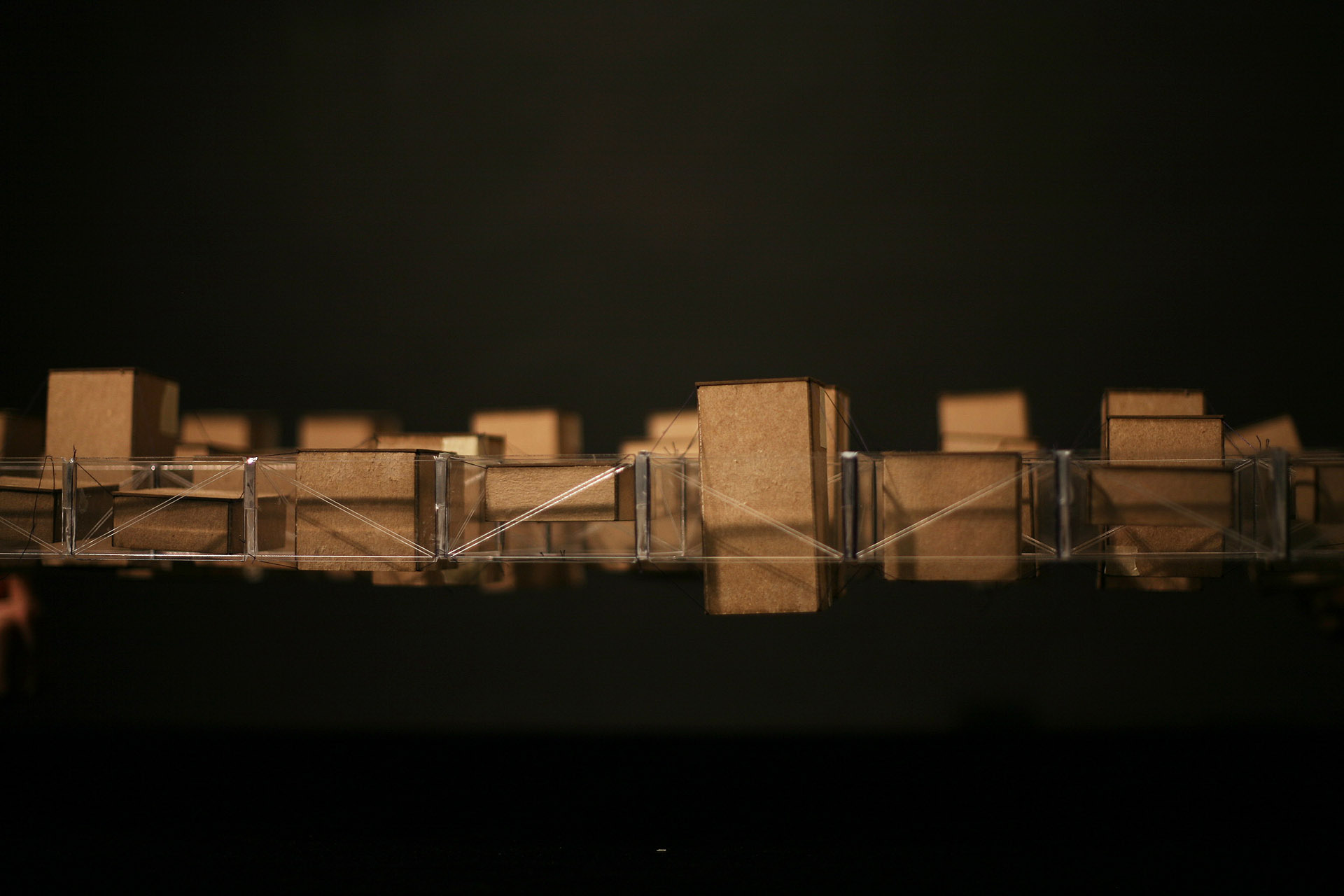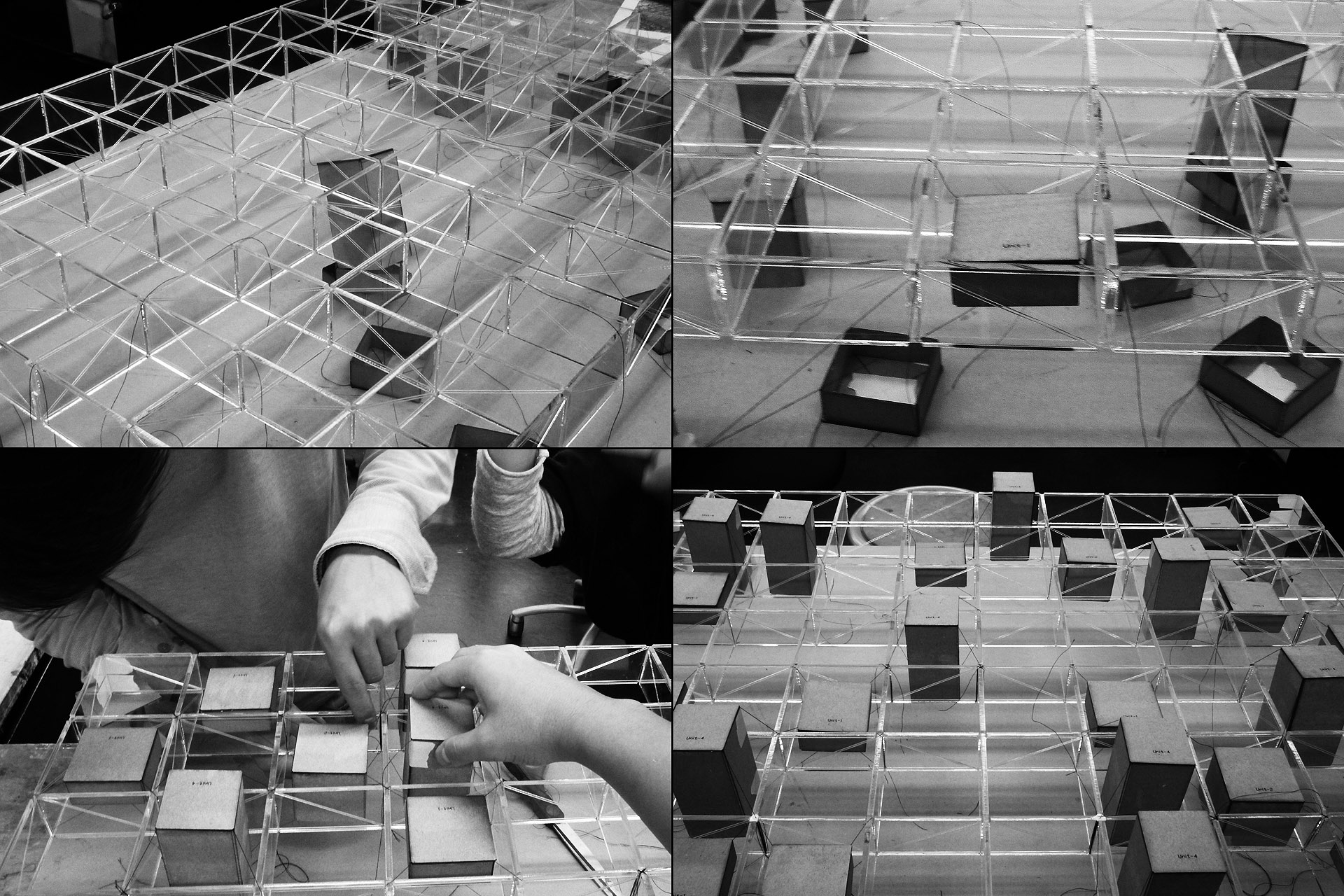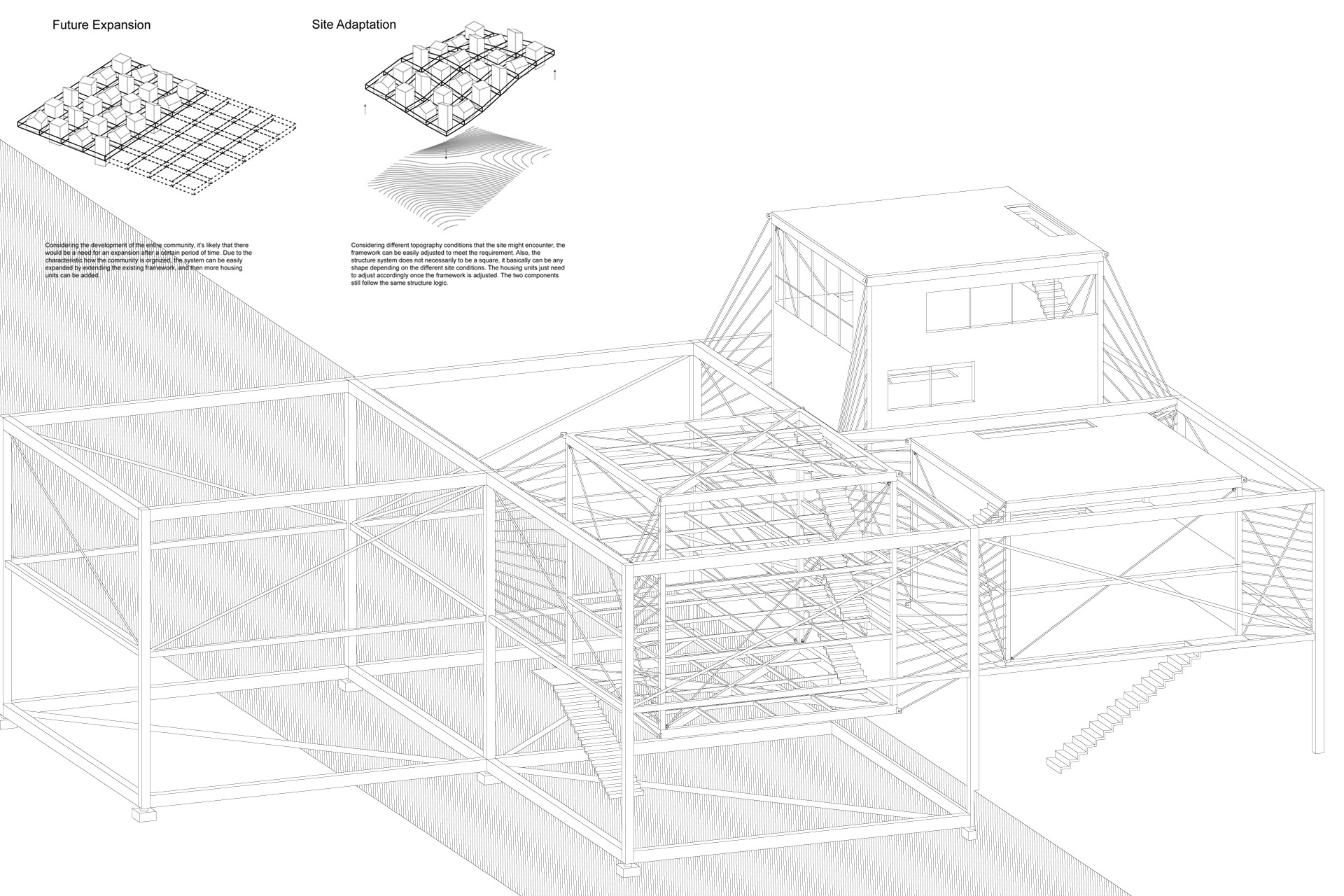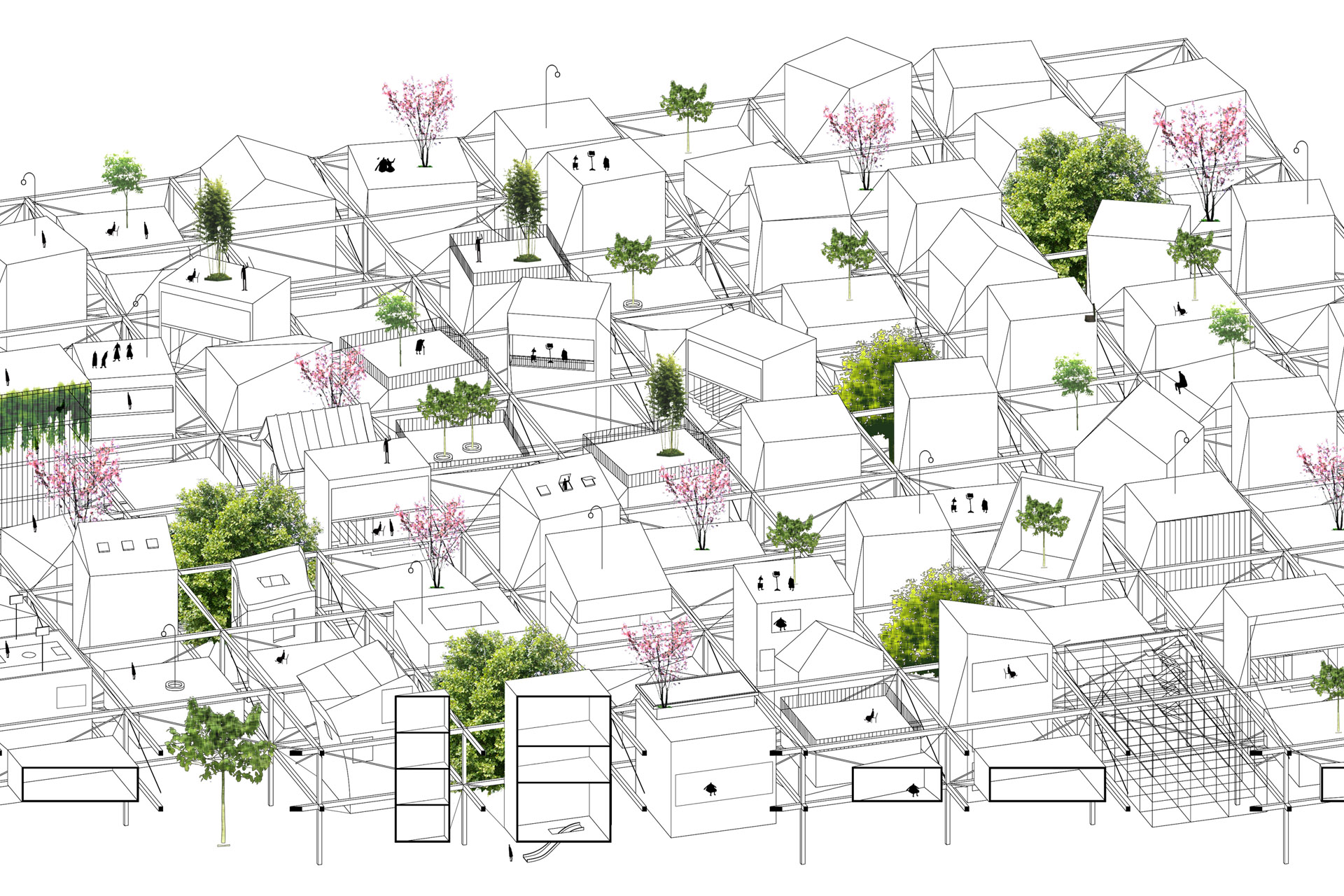First Prize, Greenville Housing Design Competition, Hong Kong
TIME: 2009
LOCATION: Sichuan, China
STATUS: Competition Entry
COLLABORATORS: GAO Jianhang, LU Xiaoxuan
Millions of people lost their home in the 2012 Sichuan earthquake, and it has risen up attention to post- earthquake housing studies. In our perspective, anti-earthquake structure is comparatively easier to achieve, as elastic structures are able to minimize seismic disaster. While the homogeneous and anti-humanity housing units are more problematic. Therefore our proposal is to suggest the government to create a structural frame as infrastructure, which allow residents to customize separated units in between. This progress turns to prescribed refuge housing to a open housing program, which allows continuous renovation under certain quality control, brings diversity back to the post-earthquake shelter communities.
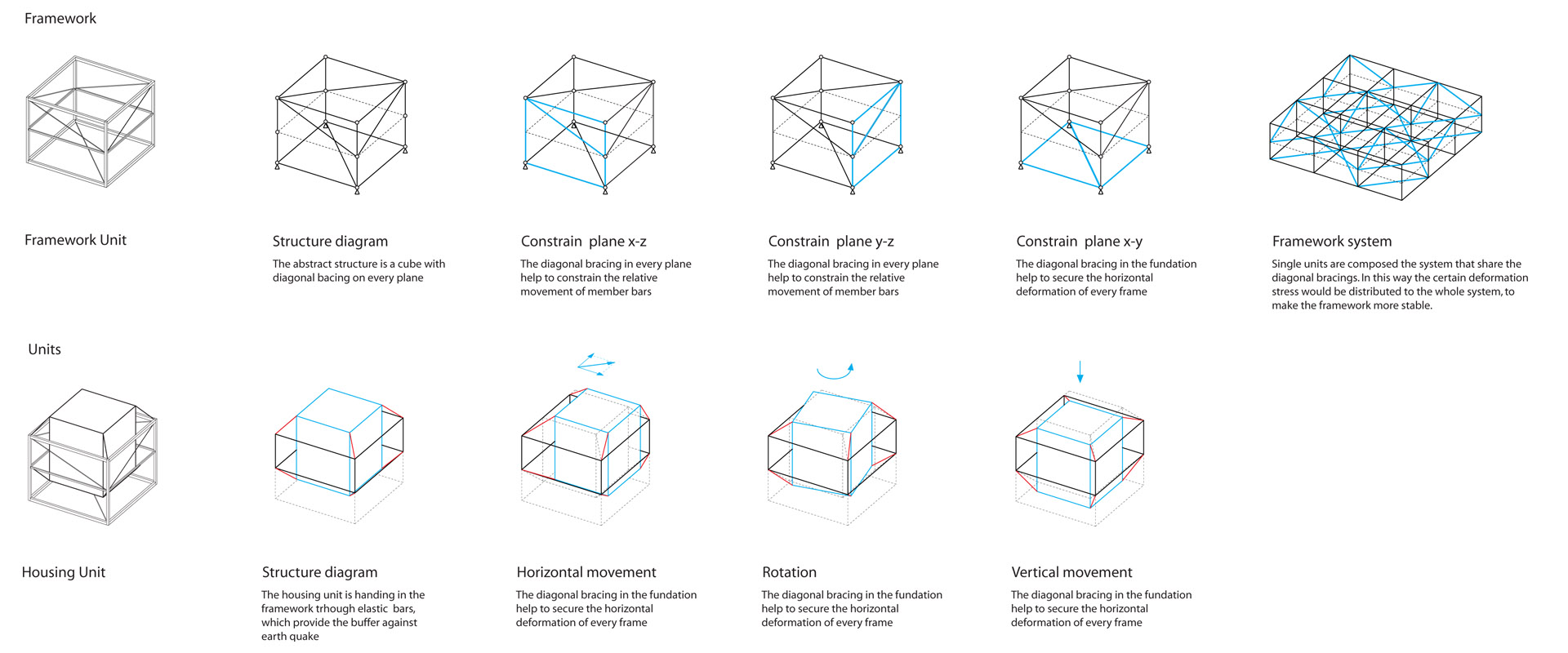
Why separate housing units from structural frame?
By separating frame and the housing units and connecting with elastic braces, it buffers the seismic forces.
How to be affordable?
Public funding to build the structural infrastructure, residents will customize their own housing with available local materials and their own preference. Consultant and inspection will be provide to ensure the structural safety.
How enrich residential community?
The frame is given as an infrastructure, in which various housing can happen. Some of them may be void to provide open spaces; some may be communal facilities that address the local cultural context. The roofs may also be used for communal spaces. The structure is also adaptable to various topographies in Sichuan area. The hanging over housing also help to improve living condition in local humid climate.
How to be renewable and sustainable?
Rather than those repetitive and harmonious units, it allows to rebuild, extend, and customize the unit under certain criteria. The community is treated as on going metabolism, to embrace changing needs. In the long term, the cost will be decreased.
